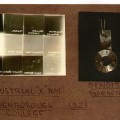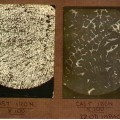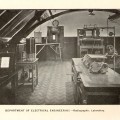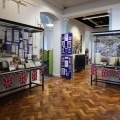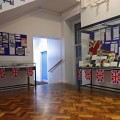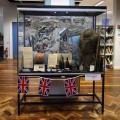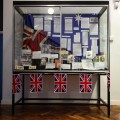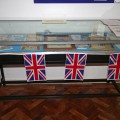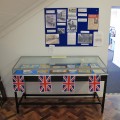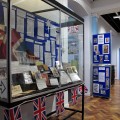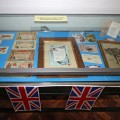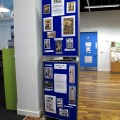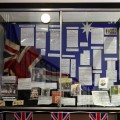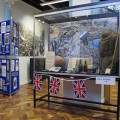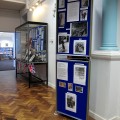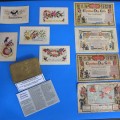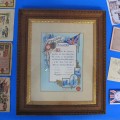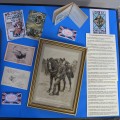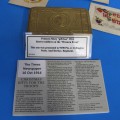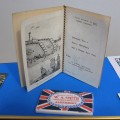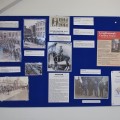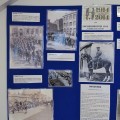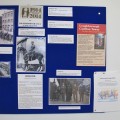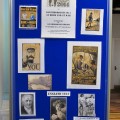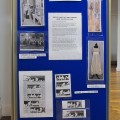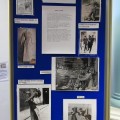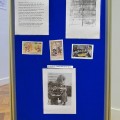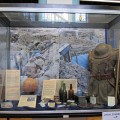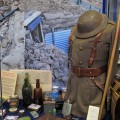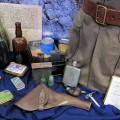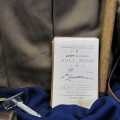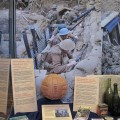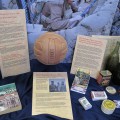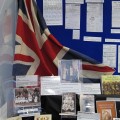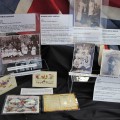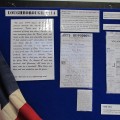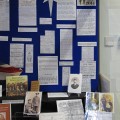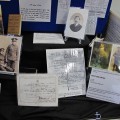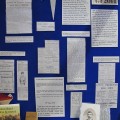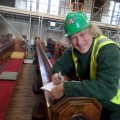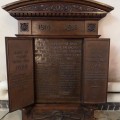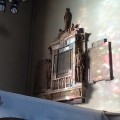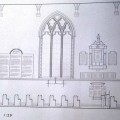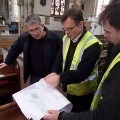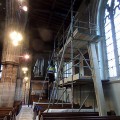Early industrial use of X-Rays at Loughborough College – 1921
19 February 2015
Although X-Rays were discovered in 1895, it was not until 1916 that they were seriously considered for the examination of engineering materials. By the end of the First World War X-Rays were being used to examine airframes, munitions, welded structures and other materials.
Loughborough College, the predecessor of Loughborough University, was one of the earliest users of X-Ray equipment for industrial applications. In September 1919 the minutes of the College Governors recorded a request from Principal Herbert Schofield to purchase equipment for the Radiographic Laboratory. Loughborough’s X-Ray equipment, consisting of a 200,000 volt coil with a Coolidge tube and localising table, was purchased from the Cox Cavendish Electrical Company Ltd for £342 13s 6d. The Radiographic Laboratory was soon renamed the X-Ray Laboratory and by 1930 much new apparatus, including a spectrometer, had been acquired.
A 1922 report on research at Loughborough College mentions the use of X-Rays to examine welds and castings and many of the illustrations for PHS Kempton’s book The Industrial Application of X-Rays, which was published the same year, were provided by Loughborough’s Radiographic Laboratory.
There was a lighter side to serious industrial research. The programme for Loughborough College’s fund-raising Empire Bazaar and Christmas Fete in 1922 includes a demonstration of X-Rays by the Head of the Electrical Engineering Department. Admission was 3d and it was ‘held behind the stage continuously during the Bazaar.’
These pages from student Harry Hopthrow’s photograph album show examples of industrial X-Ray photography carried out in the College laboratory in 1921.
Jenny Clark, Loughborough University Archives
1914, Home and Away – an exhibition at Loughborough Library
11 February 2015
Loughborough Library Local Studies Volunteers and Carillon Museum Volunteers held a joint exhibition at Loughborough Library from the beginning of December 2014 through to the end of January 30th 2015.
The exhibition focused on Christmas 1914 from the point of view of local men serving in the forces, as well as the parallel experiences of Loughborough people at home. It was put together with items from the Carillon Museum’s collections, copies of texts and documents from the Library’s Local Studies Room and articles and photographs loaned to the Library by private individuals. The exhibition was very well received and brought a constant stream of visitors to the Library.
Photographs courtesy of Sharon Gray of Loughborough Library Local Studies Volunteer Group.
Loughborough’s War Memorials as a tangible covenant of remembrance
3 February 2015
Below, Bill Brookman of The Charnwood Great War Centenary Project gives an update on the work to re-position the war memorials at All Saints Parish Church.
- The work in progress.
The Charnwood Great War Centenary Project is based on the belief that a covenant was established at the end of the Great War between those who died and those who remained; our obligation is not to forget them and this remembrance has found expression in the war memorial.
And so it is that re-positioning the war memorials at All Saints Parish Church is central to the activities of the Charnwood Great War Centenary Project, funded by the Heritage Lottery Fund. When a beautiful and massive organ was built into All Saints Church in the 1960’s, the money ran out before the wooden cladding could be added to the pipes. The new organ obscured the war memorial which was re-positioned in the only available position in the south transept. The name plaques were deposited, respectfully but unmounted, under the altar. When nearby Trinity Church was de-consecrated its memorial arrived and has sat on the floor ever since. A 20 year development plan is underway to match the church building to the needs of the present. An existing plan to re-position the memorials was accelerated to coincide with the centenary of the Great War and on the 19th January 2015 work began on the 9-week project to shift the memorials to new, better positions on the north wall of the church.
The culmination of the re-positioning of the memorials is to be marked by Charnwood Orchestra’s ‘The Banks of Green Willow’ concert at All Saints Church, Saturday March 21st 2015.
The work to the memorials is being documented in photographs and in February Lisa Etherington of Sally Strachey Conservation Ltd will answer questions on the progress of the project at a talk to which members of the public are invited.
The church is kept locked and the builders are working inside, but I am on-site most days and anyone interested in being let in to have a look can contact me, on 01509 236175, 07792 655 670 or by email at bill@billBrookman.co.uk. Organisations wishing to arrange a tour can do so by contacting Madeleine Coburn at mc-candcc@live.co.uk.
Or feel free to come to one of the church’s scheduled services.
There will be an informal opening of the church on Thursday 4th February, 2.30. Just turn up.
Bill Brookman
Submitting items to the History and Heritage Network Website
1 February 2015
Guidance for submitting items to Loughborough History and Heritage Network Website
We welcome all contributions which shed light on the history of Charnwood, both Loughborough and the surrounding villages.
These could include
- Features on people, events or buildings
- Longer historical articles
- Previously published but hard to access material
- Information on forthcoming events
- Information on local heritage organisations
Copyright
Please make sure you have the right to allow us to use any material you submit, especially photographs.
It’s possible to get round the issue of copyright by including a link to a photograph featured elsewhere on the internet rater than uploading the photograph itself.
Unfortunately, we’re unable to seek permissions on your behalf and if we’re unsure, we won’t use the material you send.
Further guidance on copyright can be found here.
See here for potential sources of copyright-free images.
Sometimes it’s possible to use other people’s photographs under Creative Commons licensing. You can find out about Creative Commons here.
Historical accuracy
We welcome well-researched, historically accurate features.
Please check dates, the spelling of people’s names and sources, etc before submission.
See here for a blog about why historical accuracy is important.
Find tips on ensuring historical accuracy here.
We reserve the right to scrutinise the source of your information and, as a last resort, to decline to publish material whose accuracy is in doubt.
What can I send?
Event information:
We actively seek information on historical events and talks across the Charnwood region.
Click here for information on how to send us event notices.
Note: Whilst we can advertise not-for profit activities, we’re not allowed to advertise commercial operations on the website. Please see the University guidance on advertising for further information.
Submitting text
We’d prefer submissions sent by email, as a word attachment.
We also welcome further reading (such as papers), either as word or pdf documents, and photographs in jpeg.
However, we may be able to accept the occasional, short submission by post. This will be decided on a case-by-case basis, so please contact us to enquire before sending anything in.
We reserve the right to shorten or edit submissions, in consultation with you, before publication. We may also suggest changes or the inclusion of additional information, links etc.
We welcome features which shed light on the spectrum of ethnicity, gender, disability, and sexuality in the history and heritage of Loughborough and Charnwood.
